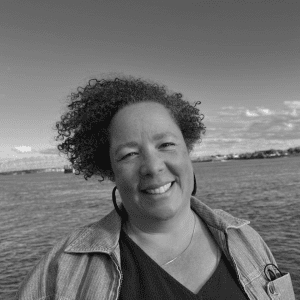Combating the Nursing Shortage: Could Introducing Nursing as Early as Elementary School Be a Solution?

- Experts suggest that introduction to career education training for students can begin as early as elementary school.
- The Mini Nurse Academy, a national nursing education program for third- through sixth-grade students from underrepresented communities, has seen positive results.
- Introduction of nursing to elementary school students may lead to increased interest in the field, increased representation in nursing, and positive health outcomes for an increasingly diverse nation.
The nursing shortage has been a long-standing issue in the world of healthcare. Discover how nursing career exploration and training in elementary school may help the problem and contribute to a diverse and balanced workforce for the future.
Career Exploration in Elementary School
While career education training in high school is typical, training beginning as early as elementary school may be ideal. With guidance and consideration of children’s developmental stages, educators can assist elementary school students to explore career concepts and ultimately make a career choice for their future.
― Early Career Introduction
In an interview with K-12 Dive, Alisha Hyslop, senior director of public policy for the Association for Career and Technical Education, discusses the benefits of career exploration in elementary school.
She highlights that helping children grapple with career concepts early on helps them to understand career options and eventually “make decisions about educational and career possibilities as they get older.” These career concepts can also be specialized, as is the case with third-grade students at A.J. Whittenberg Elementary School of Engineering in Greenville, South Carolina, who are introduced to the field of engineering.
Experts even suggest that children as young as preschool can understand the concept of work. If young children are modeled careers by their caregivers, educators, or those in their communities, they can start thinking about what they want to be when they grow up.
― Child Development Influence
Some experts take it a step further and address the relationship between career exploration in children and the stages of child development.
Jennifer Curry, Ph.D., school counselor education professor at Louisiana State University, explains in her article the developmental stages of school-aged children and how to introduce career exploration and training at each stage. “Like any area of development, career development is sequential and builds over time,” she writes.
She explains that while children in kindergarten and first grade may be introduced to the idea of career options, those in second and third grade are capable of understanding career pathways. She further explains that the fourth- and fifth-grade years are crucial for career development.
Children at this age should understand that learning is lifelong and can therefore investigate and select a career option.
― Implementation of Training Programs
Career training programs for elementary school students may serve as an avenue for early career development. Several elementary schools across the nation have integrated career training into their curricula.
The General George Meade Elementary School in Philadelphia has recently piloted a career training program, The Mini Nurse Academy (MNA), to help introduce students to the nursing profession. The school has seen positive results since the program’s induction. The children get a good concept of the role of a nurse by learning the curriculum and practicing hands-on skills.
While these types of programs would be beneficial for any student, the MNA focuses on children from underrepresented communities. By addressing representation in nursing at a foundational level, program leaders hope to diversify the nursing workforce for the future.
How The Mini Nurse Academy Aims to Increase Diversity in Nursing
The Mini Nurse Academy is a national educational program created by the National Black Nurses Association (NBNA). It aims to bring awareness to nursing as a career option for children grades three through six who live in predominantly Black and brown neighborhoods.
Danaya Hall, RN, MSN, WHNP-BC, founding president of the Alliance of Black Nurses Association of Oregon and MNA committee member with the NBNA, has been a part of the program since its creation and assisted with curriculum development.
Career modeling is another way the program aims to meet its diversity goals. Hall shares that the children interact with Black nursing professionals. In general, early exposure to a diverse group of nurses (including men in nursing) helps children to see diversity in action which may serve as a model for the future.
The Benefits of Introducing Nursing to Elementary Students
Early introduction of the nursing profession to elementary school children can be beneficial to children’s career development, the nursing community, the healthcare system, and the health of the nation overall. Here are three ways this innovative strategy makes its contribution.
Increased Interest in Nursing as a Career Choice
Of the top 10 professions that children say they want to be when they grow up, nurses do not make the list. Doctors have been one of the top medical professionals to make the list for quite some time.
According to Curry, children should be introduced to a variety of workers in their communities at a young age. Although doctors, firefighters, teachers, and police officers typically fall into this category, nurses should be included as well.
Another way to increase interest is to consider a child’s natural curiosity. Hall discusses the positive effects the MNA program has on the children. Among the many benefits the program offers, the children gain “wonder regarding the expansive professional landscape of nursing,” she says.
If nursing is introduced through career days, field trips, or programs like the MNA, the profession may grow in popularity among youth. Increased popularity in the field may lead to an increase in the number of nurses entering the workforce in the future, which could help alleviate the nursing shortage.
Increased Representation in Nursing
Nursing career preparatory training in elementary school may benefit children from communities that are not typically represented in the field. While some children may have parents, guardians, or other family members who are nurses, many do not.
Black, indigenous, and people of color (BIPOC) children may not have been introduced to the idea of nursing as a career choice. Hall points out that the MNA training activities help BIPOC children imagine themselves as future nurses.
“This is how health equity, reduction of the nursing shortage, and diversification of the nursing profession is achieved,” she explains. Hall hopes to see the MNA embedded in school curriculums across districts with a year-round residency.
Studies have shown that there is racial/ethnic disparity among nursing school graduates that may pose a problem for an increasingly diverse population. According to a 2021 American Association of Colleges of Nursing (AACN) survey, 11% of all students who graduated from a baccalaureate nursing program in 2020 were Black/African American — a number that has decreased over the last 10 years.
While this percentage does not account for associate degree and licensed practical/vocational nurse graduates, the disparity remains an issue. In fact, all racial/ethnic minorities in the survey collectively accounted for less than 35% of the total number of graduates.
While some schools are addressing the disparity in nursing through changes in recruitment, testing policy, and program development, elementary schools may help by adopting programs like the MNA to address the underrepresented youth in the community.
This approach may increase children’s interest in the field, leading to increased enrollment in nursing programs in the future and contributing to a more diverse nursing workforce for years to come.
Improved Health Outcomes for Diverse Communities
While representation in nursing is necessary to maintain fairness in employment practices alone, a diverse nursing workforce is vital for the care of the nation’s increasingly diverse population.
There is a long-standing mistrust of the healthcare system among some minority groups related to historical and perceived discrimination. This mistrust can lead to discomfort with seeking care or following through with care recommendations which may lead to poor health outcomes.
Jamil Norman, Ph.D., RN, CNE, a nursing faculty member at Walden University, speaks on the challenges faced by Black nurses. She addresses the distrust among the Black/African American community by explaining that patients may feel most comfortable seeking care if they can easily identify and communicate with the healthcare team.
Hall highlights the role nurses play in addressing this concern. “BIPOC nurses are vital in earning trust among marginalized communities that have never experienced confidence in healthcare,” she says.
Diversity in nursing contributes to . Programs and initiatives that aim to diversify the nursing workforce are vital for improving the health outcomes of diverse and underrepresented communities.
The introduction of the nursing profession to young children in combination with early exposure to a diverse group of nurses are key components to alleviating the long-standing nursing shortage. Carrying out these practices may lead to a more balanced nursing workforce in the future.
Meet Our Contributor

Danaya Hall is the founding president of the Alliance of Black Nurses Association of Oregon. She is a committee member of The Mini Nurse Academy program with the National Black Nurses Association. She has been with the program since the national committee formed and assisted with the curriculum development. Hall is an outpatient obstetrics/gynecology clinician at Kaiser Permanente in Portland, Oregon.
You might be interested in

7 Key Challenges Faced by Nurse Educators Today
The shortage of nurse educators has impacted the nursing shortage. Three experienced nurses discuss the challenges and changes needed to improve the system.

The Best States to Work as a Nurse in 2024
We collected and analyzed 12 unique nursing measures, including salary, education, safety, and burnout, to determine the best states for nurses.

6 Proven Strategies From Nurse Execs to Combat the Nursing Shortage
Here are six proven strategies nursing executives are using to combat the nursing shortage and how other nurse leaders can do the same.